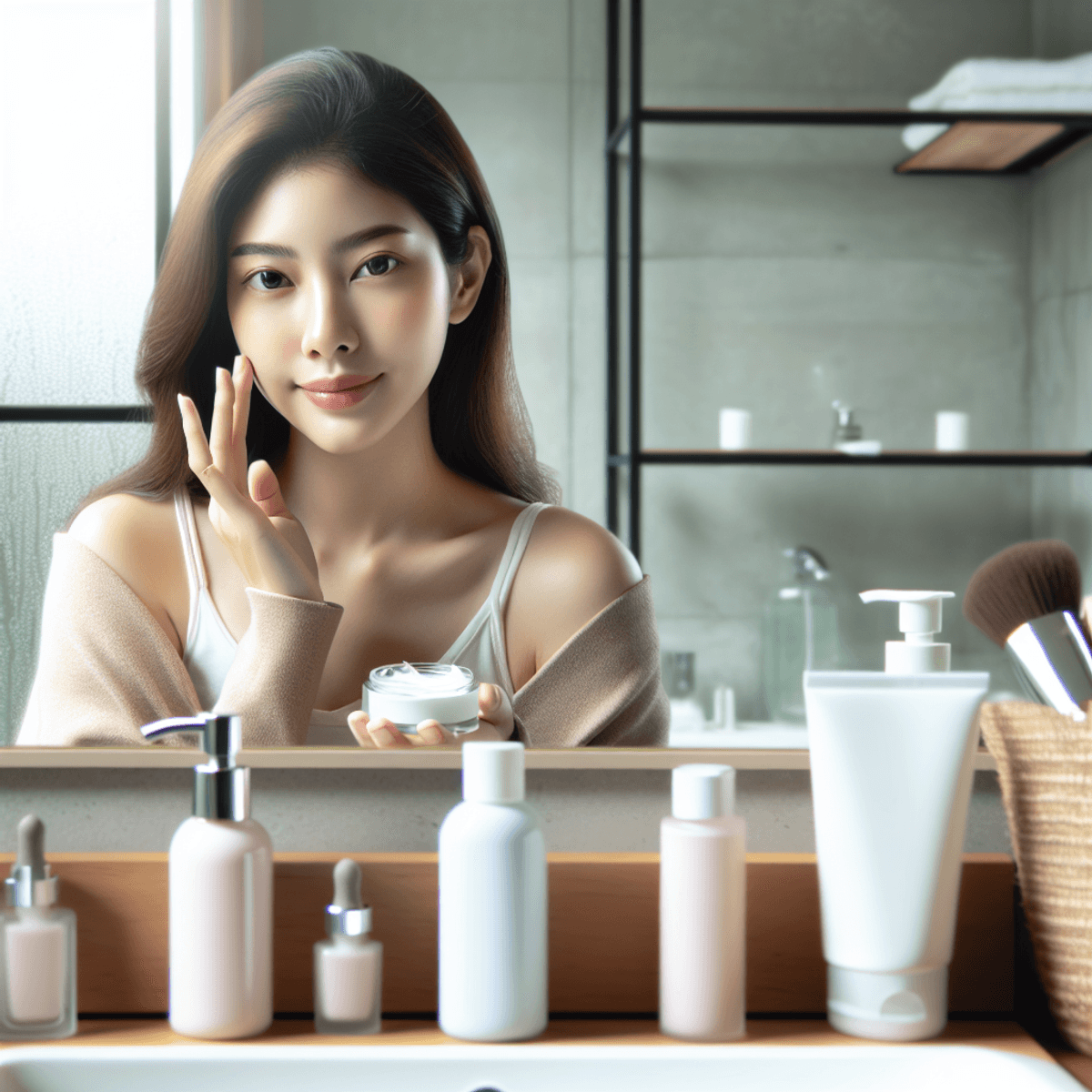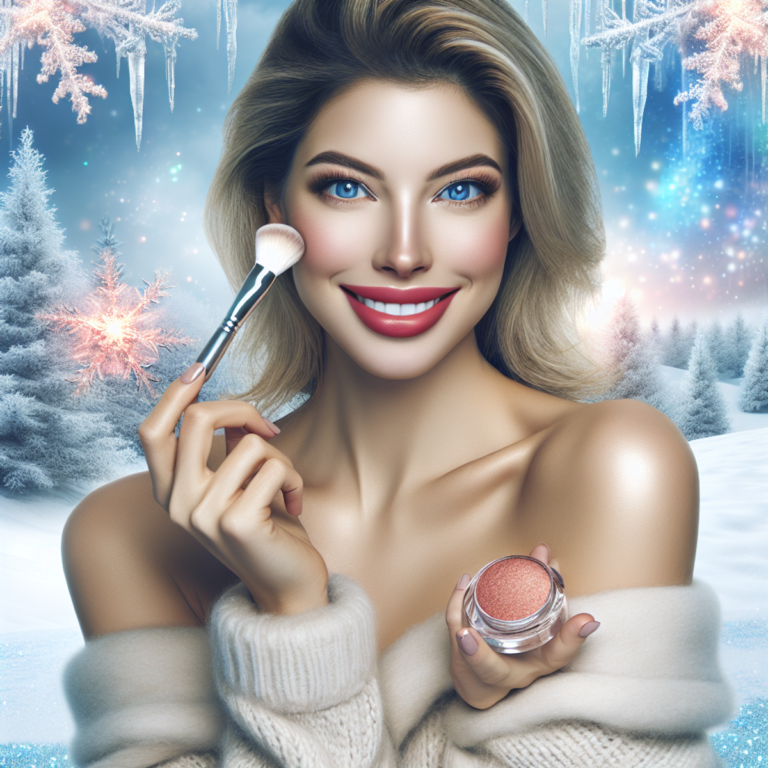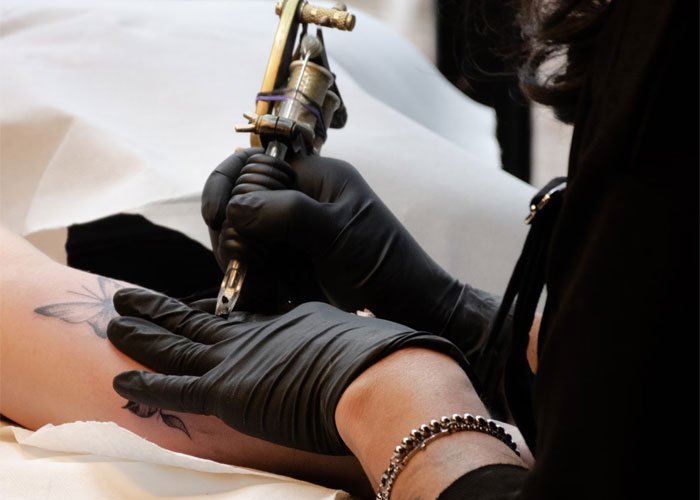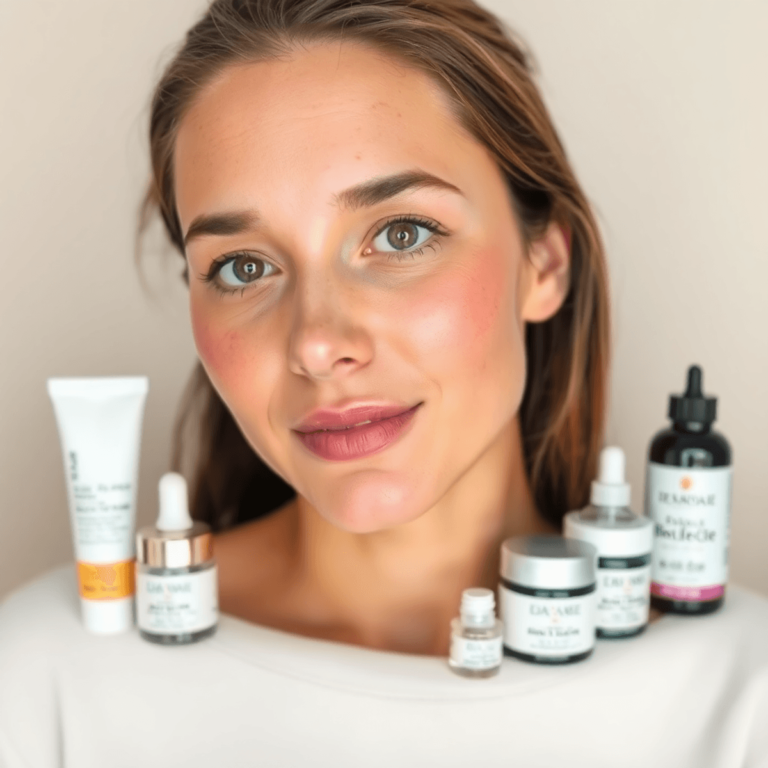How to Reduce Pimple Redness

Introduction
Dealing with pimple redness can be a frustrating experience that impacts more than just your skin. It often affects self-esteem and confidence, making everyday interactions feel daunting. Understanding how to reduce pimple redness is crucial for anyone struggling with acne or occasional breakouts.
Key takeaways from this article include:
- Effective Cleansing: Learn about the importance of using gentle cleansers suitable for acne-prone skin.
- Cold Compresses: Discover how cold compresses can provide immediate relief from swelling and discomfort.
- Topical Treatments: Explore the benefits of anti-inflammatory ingredients like niacinamide and salicylic acid.
- Hydration Practices: Find out why keeping your skin hydrated is essential, even if you have oily skin.
- Spot Treatments: Understand the use of cortisone creams for quick relief.
- Makeup Techniques: Master makeup tips that help conceal redness efficiently.
- Common Mistakes to Avoid: Get insights into what not to do when dealing with pimples.
- Professional Help: Know when it’s time to seek professional treatments to tackle persistent redness or severe acne breakouts.
By incorporating these insights into your skincare routine, you can manage and significantly reduce pimple redness, helping you regain confidence and clarity in your daily life.
Understanding Pimple Redness
Knowing why pimples turn red is key to managing them effectively. The redness mainly comes from inflammation, which is how our body naturally responds to infection or injury. When a pore gets blocked with too much oil, dead skin cells, and bacteria, our immune system kicks in to deal with it, causing inflammation. This is what makes pimples look red and swollen.
What Makes Pimples Redder?
Several things can make pimple redness worse:
- Hormonal Changes: Changes in hormone levels, especially during puberty, menstruation, or stress, can lead to more oil production in the skin. This extra oil can block pores and cause inflamed acne.
- Diet: Some foods, particularly those high in sugar and dairy, might trigger or worsen acne for some people. These food choices can increase inflammation in the body, which then affects the skin.
- Skincare Products: Using products that are too harsh or have irritants like alcohol and certain fragrances can make skin irritation worse. It’s important to choose products made for sensitive or acne-prone skin to reduce this risk.
Factors such as genetics and environmental influences also play a role in how your skin responds to potential irritants. Knowing these common causes helps you take proactive steps in your skincare routine to manage and reduce redness effectively.
Inflammation not only leads to visible redness but also contributes to discomfort and swelling. When addressing how to reduce redness of spots, it’s vital to consider both immediate relief strategies and long-term preventative measures.
Understanding how these elements interact is key when learning how to remove redness from pimples. By identifying specific triggers and making informed choices about skincare products and lifestyle habits, you can better control pimple redness and improve overall skin health.
Effective Cleansing Techniques for Reducing Pimple Redness
Using a gentle cleanser in your skincare routine is crucial to minimize irritation and redness. Harsh cleansers can strip the skin of its natural oils, leading to increased inflammation and pimple redness.
Importance of Gentle Cleansers
A gentle cleanser helps maintain the skin’s natural barrier, preventing excessive dryness and irritation. This is particularly important for acne-prone skin, which is already sensitive due to ongoing inflammation. By choosing a mild formula, you can cleanse effectively without exacerbating redness.
Recommended Types of Cleansers
When selecting a cleanser:
- Fragrance-Free: Fragrances can be irritating for sensitive skin, making redness worse.
- Non-Comedogenic: Ensures the product won’t clog pores.
- Hydrating Ingredients: Look for ingredients like glycerin or hyaluronic acid that help retain moisture.
Popular options include:
- CeraVe Hydrating Cleanser: Contains ceramides and hyaluronic acid.
- La Roche-Posay Toleriane Hydrating Gentle Cleanser: Known for its soothing properties.
- Neutrogena Ultra Gentle Daily Cleanser: Fragrance-free and designed for sensitive skin.
Optimal Cleansing Frequency
For best results:
- Twice Daily Routine:
- Morning: Removes overnight oil build-up and prepares the skin for daytime products.
- Evening: Cleanses away makeup, dirt, and pollutants accumulated throughout the day.
- Avoid Over-Cleansing:
- Over-washing can strip essential oils, causing dryness and irritation.
- Stick to the twice-daily routine unless you’ve been sweating excessively or exposed to significant dirt.
- Use Lukewarm Water:
- Hot water can increase redness by dilating blood vessels.
- Lukewarm water helps soothe the skin while effectively removing impurities.
Implementing these techniques ensures that your cleansing routine supports reducing pimple redness without causing further irritation.
The Power of Cold Compresses in Soothing Red Pimples
Using a cold compress can be an effective way to reduce swelling and discomfort associated with inflamed pimples. The immediate cooling effect of a cold compress provides relief, making it a popular method for those looking to quickly address pimple redness.
Benefits of Using Cold Compresses
- Immediate Relief: A cold compress helps constrict blood vessels, leading to reduced swelling and redness almost instantly.
- Reduced Discomfort: The cooling sensation can alleviate pain and irritation, providing much-needed comfort.
- Decreased Inflammation: By limiting the inflammatory response, a cold compress can prevent pimples from becoming more pronounced.
How to Properly Apply a Cold Compress
To maximize the effectiveness of a cold compress, it’s important to understand how to make and apply one properly. You can find detailed instructions on how to make a cold compress for your skincare routine.
1. Prepare the Compress:
- Use a clean cloth or a commercial ice pack wrapped in a thin towel.
- Ensure the compress is not too heavy or bulky for ease of application.
2. Application Process:
- Place the cold compress gently on the affected area.
- Hold it in place for about 10 minutes, allowing the cool temperature to penetrate the skin.
3. Frequency:
- Repeat this process 2-3 times per day as needed.
- Avoid applying directly to the skin without a barrier to prevent frostbite or irritation.
It’s also worth noting that while cold compresses are beneficial for reducing inflammation, they should be used appropriately. For instance, if you’re dealing with muscle soreness or stiffness after an intense workout, you might want to consider using heat instead. This is where understanding ice vs heat therapy becomes crucial.
Incorporating these strategies into your skincare routine can offer quick and visible improvements, helping you achieve clearer skin with less redness. However, it’s essential to remember that if your condition persists or worsens despite these home remedies, it may be time to consult with a healthcare professional for further evaluation and treatment options. You can learn more about potential underlying health issues by visiting this comprehensive health guide.
Topical Treatments That Can Help Reduce Pimple Redness
Two key ingredients known for their anti-inflammatory properties are niacinamide and salicylic acid. These topical treatments can be powerful allies in the battle against acne breakouts and associated redness.
Niacinamide
Niacinamide, also known as Vitamin B3, offers several benefits for acne-prone skin:
- Anti-Inflammatory: Reduces inflammation, which can help soothe red, irritated pimples.
- Regulates Sebum Production: Helps control excess oil production, minimizing the chances of further breakouts.
- Skin Barrier Support: Strengthens the skin’s barrier function, improving overall skin health and resilience.
Salicylic Acid
Salicylic acid is another effective ingredient often found in acne treatments. It works by:
- Exfoliation: Unclogs pores through gentle exfoliation, preventing the buildup of dead skin cells that can lead to breakouts.
- Anti-Inflammatory: Like niacinamide, salicylic acid has anti-inflammatory properties that help reduce redness and swelling.
- Penetration: Its ability to penetrate deeply into the pores makes it particularly effective for treating blackheads and whiteheads.
Combining Niacinamide and Salicylic Acid
When used together, niacinamide and salicylic acid can provide a comprehensive approach to managing acne and redness. Consider incorporating products that contain these ingredients into your skincare routine to tackle both current breakouts and prevent future ones. Always patch test new products to ensure they suit your skin type.
By using these topical treatments, you can effectively target both acne breakouts and the redness that comes with them.
Why Hydration is Important for Acne-Prone Skin with Redness
Keeping your skin hydrated is essential, even if you have oily or acne-prone skin. When your skin lacks moisture, it can become redder and produce more oil, leading to more breakouts. Proper hydration helps balance the skin’s natural barrier, which is crucial for reducing inflammation and maintaining overall skin health.
Choosing the Right Moisturizer
When selecting a moisturizer, focus on finding a non-comedogenic formula. This ensures that the product won’t clog your pores or contribute to new breakouts. Look for labels that specifically mention “non-comedogenic” or “oil-free.”
What to Look for in a Moisturizer
Here are some key characteristics of a good moisturizer for acne-prone skin:
- Lightweight Texture: Opt for gel-based or water-based moisturizers that absorb quickly without leaving a greasy residue.
- Fragrance-Free: Fragrances can irritate sensitive skin and increase redness.
- Ingredient List: Seek ingredients like hyaluronic acid, glycerin, and ceramides. These components help retain moisture without clogging pores.
- Anti-Inflammatory Properties: Some moisturizers contain soothing agents like aloe vera or green tea extract, which can help calm irritated skin.
Recommended Moisturizers
Here are some examples of effective moisturizers for acne-prone skin:
- Neutrogena Hydro Boost Water Gel: Contains hyaluronic acid to provide intense hydration without clogging pores.
- Cetaphil Daily Hydrating Lotion: Lightweight and enriched with hyaluronic acid, ideal for sensitive, acne-prone skin.
- La Roche-Posay Effaclar Mat: Designed specifically for oily skin to mattify while providing necessary moisture.
How Moisturizing Helps Your Skin
Incorporating these types of moisturizers into your daily skincare routine ensures that your skin remains hydrated and less prone to redness and irritation. Proper hydration also supports the effectiveness of other treatments you may be using for acne and redness reduction. For instance, if you’re using topical treatments like metronidazole, understanding how to use a moisturizer alongside such treatments is crucial.
Spot Treatments for Quick Relief from Red Pimples
When you’re dealing with a particularly angry and red pimple, cortisone creams can be a game-changer. These over-the-counter treatments are formulated to reduce inflammation swiftly, providing quick relief from redness and swelling.
Benefits of Cortisone Creams
- Anti-inflammatory properties: Cortisone creams contain hydrocortisone, which helps to calm the skin and reduce redness.
- Quick action: These creams offer fast results, making them ideal for emergencies when you need to minimize pimple redness quickly.
- Versatile application: Suitable for various skin types, cortisone creams can be used on both small and large pimples.
How to Apply Spot Treatments Correctly
To maximize the benefits of cortisone cream without causing further irritation:
- Cleanse your face: Always start with a clean slate. Use a gentle cleanser to remove dirt, oil, and any makeup residue.
- Pat dry: Gently pat your face dry with a soft towel. Avoid rubbing as it can irritate your skin further.
- Apply sparingly: Dab a small amount of cortisone cream directly onto the red pimple. Use a clean finger or cotton swab for application.
- Be gentle: Avoid massaging the cream into the skin; instead, lightly tap it on until absorbed.
- Limit frequency: Use cortisone cream only once or twice daily to prevent overuse, which could potentially thin the skin if used excessively.
By incorporating these steps into your skincare routine, you can effectively target those stubborn red pimples and achieve clearer skin more quickly.
Makeup Techniques That Can Help Conceal Pimple Redness When Necessary
Using makeup to conceal pimple redness effectively requires a basic understanding of color theory. The principle here is simple: green-tinted concealers can neutralize the red tones of pimples. This technique leverages the fact that green and red are opposite on the color wheel, allowing them to cancel each other out.
Steps for Applying Green-Tinted Concealer
- Preparation: Start with a clean, moisturized face. This ensures that makeup adheres well and lasts longer.
- Application: Dab a small amount of green-tinted concealer directly onto the red areas. Use your finger or a makeup brush to gently blend the edges.
- Blending: To achieve a natural look, it’s essential to blend the green concealer seamlessly into your skin. Avoid rubbing too hard to prevent irritation.
- Foundation: Apply your foundation over the concealer using a makeup sponge or brush. Ensure even coverage without disturbing the underlying layer.
Tips for Seamless Blending
- Choose the Right Shade: Opt for a green concealer that matches your skin tone closely to avoid an unnatural look.
- Layering: If needed, apply a second layer of concealer and foundation for more coverage, but do so sparingly to avoid cakiness.
- Setting Powder: Finish with a translucent setting powder to lock everything in place and reduce shine.
By following these steps, you can effectively use makeup to conceal pimple redness, enhancing your overall complexion while minimizing visible breakouts.
Avoiding Common Mistakes That Can Worsen Pimple Redness During Treatment Attempts
Risks of Picking Pimples
Picking at pimples is a common yet harmful habit. When you squeeze or pick at pimples, you risk:
- Increased Inflammation: Manipulating the skin around a pimple can cause additional irritation and redness, making the problem worse.
- Scarring: Picking can lead to permanent scars and hyperpigmentation. Once the skin is damaged, it may take much longer to heal.
- Spreading Bacteria: Introducing bacteria from your hands to your face can exacerbate acne. This can lead to more breakouts and increased redness.
Alternative Methods for Dealing with Pimples
Instead of picking at pimples, consider these alternative methods that are less likely to cause further irritation:
Spot Treatments
- Cortisone Creams: These can be effective for reducing redness and swelling when used sparingly.
- Salicylic Acid: Helps in unclogging pores and reducing inflammation.
Cold Compresses
Apply a cold compress for about 10 minutes to reduce swelling and provide immediate relief.
Topical Treatments
- Niacinamide: Known for its anti-inflammatory properties, it can help soothe irritated skin.
- Benzoyl Peroxide: Effective in killing bacteria that contribute to acne, though it should be used cautiously to avoid over-drying.
Proper Cleansing Routine
Use a gentle, fragrance-free cleanser twice daily to keep your skin clean without causing further irritation.
Hydration
A lightweight, non-comedogenic moisturizer helps maintain adequate moisture levels in the skin.
Consistent Skincare Routine
Maintaining a consistent routine with anti-acne agents can prevent future breakouts and reduce redness over time.
Professional Advice
For persistent cases of redness or severe breakouts, consult a dermatologist who can recommend treatments such as chemical peels or laser therapy.
By avoiding these common skincare mistakes and opting for gentler methods, you minimize the risk of worsening pimple redness while achieving clearer skin naturally and permanently.
When To Seek Professional Help For Persistent Cases Of Pimple Redness Or Severe Acne Breakouts?
Sometimes, despite your best efforts, at-home treatments may not be enough to reduce pimple redness effectively. In such cases, seeking help from a dermatologist can provide more advanced solutions.
Professional Options Available:
1. Chemical Peels
Chemical peels involve applying a chemical solution to the skin, which exfoliates the top layers and promotes new skin growth. This treatment can reduce redness and improve skin texture.
- Suitable for individuals with persistent redness and mild acne scars.
- Common peeling agents include glycolic acid, salicylic acid, and lactic acid.
2. Laser Therapy
Laser treatments target specific areas of the skin to reduce inflammation and redness. Types of lasers used for acne-related issues include pulsed dye laser (PDL) and fractional laser therapy.
- Effective in treating severe acne breakouts and reducing pimple redness by targeting blood vessels under the skin.
- Often recommended for those who have not responded well to topical treatments.
When To Consider Professional Treatment:
- If you experience severe or cystic acne that does not respond to over-the-counter products.
- When pimple redness persists despite following a consistent skincare routine.
- If at-home treatments cause irritation or are contraindicated due to your skin type or condition.
Consulting with a dermatologist ensures that you receive personalized care tailored to your specific needs. A professional can accurately diagnose the underlying causes of your skin issues and recommend appropriate dermatology treatments.
FAQs (Frequently Asked Questions)
What causes pimple redness?
Pimple redness is primarily caused by inflammation associated with acne. Factors such as hormonal changes, diet, and certain skincare products can also contribute to increased redness.
How can I effectively reduce pimple redness?
To reduce pimple redness, consider using a gentle cleanser, applying cold compresses, and utilizing topical treatments containing ingredients like niacinamide and salicylic acid. Maintaining hydration with non-comedogenic moisturizers is also essential.
What role do cold compresses play in treating inflamed pimples?
Cold compresses provide immediate relief from swelling and discomfort associated with inflamed pimples. To maximize effectiveness, apply the cold compress gently to the affected area for a few minutes.
Are there specific moisturizers recommended for acne-prone skin?
Yes, it’s important to use non-comedogenic moisturizers that maintain adequate moisture levels without clogging pores or worsening redness. Look for lightweight formulas that hydrate without adding excess oil.
What are cortisone creams and how can they help with red pimples?
Cortisone creams are topical treatments that can quickly target red spots and pimples. They work by reducing inflammation. Apply them carefully to avoid causing further irritation.
When should I seek professional help for persistent pimple redness or severe acne?
If at-home treatments are ineffective or if you experience severe acne breakouts, it may be time to consult a dermatologist. Professional options such as chemical peels and laser therapy can be beneficial in these cases.










